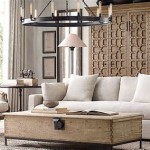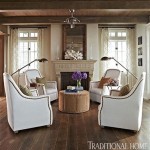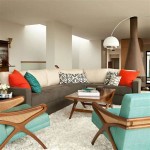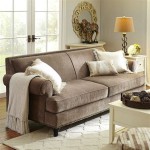Mixing Leather and Fabric Living Room Furniture
Mixing leather and fabric furniture in a living room can create a dynamic and visually appealing space. This design choice offers a blend of textures, colors, and styles, resulting in a room that feels both sophisticated and comfortable. Careful consideration of several factors can ensure a cohesive and balanced aesthetic.
Key Considerations for Mixing Leather and Fabric
Several key factors contribute to a successful blend of leather and fabric furniture:
- Balance: Avoid overwhelming the space with too much of one material. Strive for a visual equilibrium between leather and fabric pieces.
- Style Harmony: Consider the overall style of the living room. Modern, traditional, or eclectic styles can influence the choice of leather and fabric types and colors.
- Color Coordination: A cohesive color palette ties the different materials together. Choose colors that complement each other, either through contrasting shades or harmonious tones.
Choosing the Right Leather
Leather furniture comes in a variety of types and colors, each offering unique characteristics:
- Types of Leather: Options range from full-grain leather, known for its durability and natural markings, to corrected grain leather, which offers a more uniform appearance.
- Leather Colors: Classic neutrals like brown and black provide a timeless appeal, while bolder colors like burgundy or navy can add a touch of personality.
- Leather Finish: Consider the finish of the leather, whether it's matte, semi-gloss, or high-gloss, as this impacts the overall look and feel of the piece.
Selecting Complementary Fabrics
Fabric choices offer a wide range of textures and patterns to complement leather furniture:
- Fabric Types: Linen, velvet, cotton, and wool offer different textures and levels of formality. Consider durability and maintenance requirements.
- Fabric Patterns: Introduce visual interest with patterned fabrics, but exercise caution to avoid clashing with the leather. Subtle patterns or textured solids often work well.
- Fabric Colors: Coordinate fabric colors with the chosen leather to create a cohesive look. Consider using the leather as a base color and incorporating complementary or contrasting fabric colors.
Creating a Balanced Arrangement
Strategic placement of furniture pieces is crucial for a harmonious blend of materials:
- Focal Point: Decide which material will be the focal point. A large leather sofa can anchor the room, while fabric accent chairs can add pops of color and texture.
- Visual Weight: Balance the visual weight of leather and fabric pieces. A large leather sectional might be balanced by several smaller fabric chairs.
- Spatial Distribution: Distribute leather and fabric pieces throughout the room to avoid creating distinct "zones" of each material. This promotes a more integrated and balanced feel.
Incorporating Accessories and Rugs
Accessories and rugs play a vital role in unifying the different materials:
- Throw Pillows and Blankets: Use throw pillows and blankets to bridge the gap between leather and fabric furniture. Choose textiles that incorporate both leather and fabric colors or textures.
- Area Rugs: An area rug can define the seating area and tie together the different furniture pieces. Consider a rug that complements both the leather and fabric colors and adds another layer of texture.
- Decorative Accents: Incorporate decorative accents that complement both materials, such as metal or wood, to further enhance the cohesive feel of the room.
Maintaining the Balance
Maintaining a balance between aesthetics and practicality is important:
- Lifestyle Considerations: Consider lifestyle and usage when selecting materials. Families with pets or young children might opt for more durable and stain-resistant fabrics.
- Cleaning and Maintenance: Understand the cleaning and maintenance requirements of both leather and fabric furniture. This will help ensure the longevity and appearance of the pieces.
- Budgeting: Leather furniture is typically more expensive than fabric furniture. Factor this into the budget when planning the furniture mix.
Examples of Successful Combinations
Several combinations of leather and fabric create visually appealing living rooms:
- Classic Combination: A brown leather sofa paired with cream or beige fabric armchairs offers a timeless and elegant look.
- Modern Contrast: A black leather sectional combined with brightly colored velvet accent chairs creates a modern and vibrant space.
- Textural Play: A tan leather sofa paired with textured linen armchairs and a woven area rug adds depth and visual interest.
By carefully considering these factors, one can create a living room that showcases the unique beauty and comfort of both leather and fabric furniture, resulting in a stylish and inviting space.

Living Room Furniture Mixing Leather And Fabric Colorado Style Home Furnishings

Living Room Furniture Mixing Leather And Fabric Colorado Style Home Furnishings

How To Mix Leather And Fabric Furniture

Living Room Furniture Mixing Leather And Fabric Colorado Style Home Furnishings

How To Mix Leather And Fabric Furniture

Can You Mix Leather And Fabric Furniture

26 Best Mixing Leather And Fabric Ideas Living Room Decor Inspiration Designs

4 Designer Tips How To Mix Match Furniture

Mixing Different Types Of Furniture Styles In 2024

Living Room Furniture Mixing Leather And Fabric Colorado Style Home Furnishings








